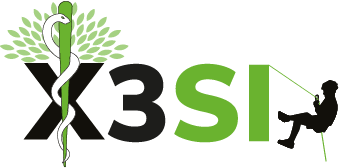Notes and revision resources for Module 10A – Major Illness.
This module includes information on asthma, anaphylaxis, heart attack, stroke, seizures, diabetes, sepsis and meningitis.
Basic Premise of Life Support
- We need the gasses (air) to come in and out
- We need the blood to go round and round
- We need the brain to send the signals that make these things happen
Anything which stands in the way of this is an immediate life threat.
Secondary Assessment
- Vital Signs (particularly mental status)
- Physical Exam
- SAMPLE History
SAMPLE History
- S– Signs & Symptoms
- A– Allergies
- M– Medications
- P– Past Pertinent History
- L– Last Ins and Outs
- E– Events Prior
Asthma
- 2 puffs every 2 minutes until they’ve had 10 puffs (as required)
- Use a spacer, improvised spacer or hold the inhaler 4cm from the patient’s mouth
- Red flags include symptoms not responding to the inhaler, the patient becoming exhausted or too breathless to speak
Manufactured Spacer:
Improvised Spacer:
Anaphylaxis
- Can develop or reoccur up to 24 hours after exposure to the allergen
- Epinephrine (Adrenaline) is the definitive treatment
- Auto-injector (epipen) administered to the side of the mid-thigh
- Evacuate the patient with additional epinephrine wherever possible
Heart Attack
- Central chest pain radiating to the arm, jaw or back, light headedness, pale cool clammy skin, shortness of breath,.
- Sit them on the floor, with their knees bent and their head and shoulders supported
- Help administer GTN if they have had it previously prescribed
- Chew 300mg of aspirin if not allergic and over 16
Heart Attack
- Facial Droop
- Arm Weakness
- Speach difficulties
- Time to call 999
- Even a resolving TIA should be treated emergently
Seizures
- Calm, Cushion, Call
- If you can’t get the danger away from the patient, get the patient away from the danger
Diabetes
- Hypo = Low
- Hyper = High
- Hypo = sudden onset: Mental status changes, sudden confusion, sweaty, clammy skin, weakness, fainting, hunger
- Hyper = slow onset: presents like dehydration, loss of appetite, nausea, intense thirst, flushed skin, decrease in AVPU
- Never administer insulin, but you can help a compliant patient do so
- Rule of 15s for hypo
- If unresponsive, disove sugar in warm water and rub around the inside of the gums
Meningitis
- Differentiating symptoms are stiff neck, photophobia and rash that doesn’t disappear when pressed against a glass
- Seek urgent medical advice
Sepsis
- S – Slurred speach or confusion
- E – Extreme shivering or muscle pain
- P – Passing no urine in a day
- S – Severe breathlessness
- I –It feels like you’re going to die
- S– Skin mottled or discoloured
A quick reminder, in order to fully validate module 10A, there are 4 steps:
- Module 10A Part 1 – Life Support (Video Call)
- Module 10A Part 2 – Trauma & Injury (Video Call)
- Module 10A Part 3 – Major Illness (Video Call)
- Module 10B – Practical Skills Session
If you ever have any questions about first aid, or if you have an incident and want to debrief, I’m happy to jump on a call with you. You can reach me via my BSO email address, or on WhatsApp on +60 12 555 8350. Do remember I’m in GMT+8 so am unlikely to be online during the evenings GMT/CET.
